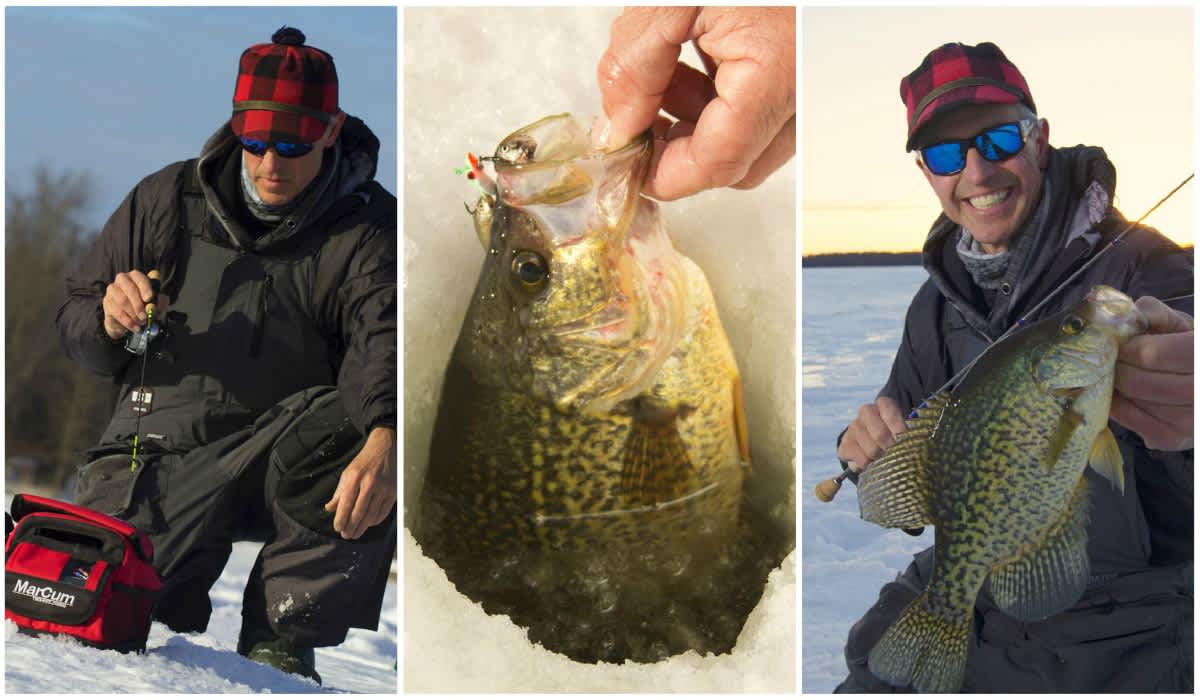My No. 1 Lure for Midwinter: Northland’s Forage Minnow Dart
Chip Leer 02.14.18

Yes, I feel your pain. It’s February, and the bite can get a bit slow. Add in the fact that snow is often deep, temps are cold, and you might need an auger extension just to find water, and it’s easy to choose a warm couch over a frozen 5-gallon bucket.
That said, I learned long ago that the fish are always biting — somewhere — and it simply takes dedication to find them, and creativity (at times) to make them strike. Here’s a tip to get you started in the right direction when it comes to the catching part: Whether you’re chasing crappies, perch, walleyes or pike, a properly presented swimming jig can help you ice more fish as the hardwater season progresses into the midwinter doldrums.
Thanks to their ability to swim horizontally, such lures — also called swim jigs or swimbaits — allow you to reach out and trigger more fish than strictly vertical presentations. This makes them perfect for extending the action of peak feeding periods around sunrise and sunset, as well as searching for scattered groups of aggressive fish during the day.
Swim jig options include classic choices such as the Northland Fishing Tackle Puppet Minnow and the classic Rapala Jigging Rap, but my all-around favorite is Northland’s Forage Minnow Dart (below).

This unique jig is one of the only, if not THE only one, designed for use with soft plastics or live bait. The jig features a top-mounted line tie, single tail hook, and centrally located belly treble. Because of the jig’s balance, it swims horizontally when jigged and rocks subtly before coming to rest. Trust me: this action is a great trigger.
What’s unique to the Forage Minnow Dart is that you can make it swim however you like by changing how you tip it. Most often I tip with a minnow head on the treble, and at times I’ll add a full minnow (hooked through the head) on the rear single hook (see photo below).

If I want a different color or extra glide, then I’ll opt for a flat-sided, scented plastic such as an Impulse Water Flea (below) or Impulse Stone Fly. Remember, the more surface area of the plastic, the further the bait will glide. This is why I love this swim bait; I can adjust action and glide to match the fish’s mood.

To fish a swim jig, start with a couple of 12- to 18-inch jig strokes to get the bait swimming outside the hole to attract the attention of nearby fish. Let the jig settle between strokes.
Some fish charge in and hit right away, but others need more coaxing. To turn these lookers into biters, play a game of cat-and-mouse with smaller jig lifts, nods and bobs, or encourage the fish to chase by slowly raising the lure away from it. Obviously, electronics are key to making the right move and the right time.

Keep in mind that a Forage Minnow Dart acts differently depending on the tipping. When fishing a big plastic, I let the jig free-fall on a slack line. With a minnow, it performs better on a semi-taut leash.
While some anglers consider midwinter the time for finesse, I always keep a swim jig tied on at least one rod — and you should, too. These free-swimming, versatile lures catch fish all winter, even during the dreaded doldrums of February.


